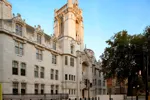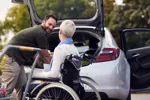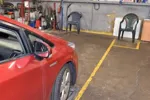Bristol Seat is headed by Mark Stevens, formerly a dealer principal with Summit Group, while ex-Lookers dealer principal Stephen Featherstone is running Liverpool Seat. It is the first time both men have run an independent dealership.
The former Caledonia Fiat site in Manchester, which closed last month when the group went into receivership, has been acquired and is expected to open as a Seat outlet later this year. Croydon and Bradford-based dealerships are also under negotiation.
Seat currently has 112 dealerships, 12 of which are sponsored retailer sites. It had hoped to build the network to 120 outlets by this year, but Peter Wyhinny, Seat UK director, said network expansion is taking longer than hoped due mostly to property problems.
“This is the most difficult thing to achieve – finding a property that is suitable and affordable,” he added. “Short term leases on sites make them unfeasible investments. It’s particularly common around the M25. And it can take the best part of a year to get a dealership up and running if it’s not already a motor trade facility. We regularly look at ex-VW and Audi outlets for this purpose.”
Wyhinny said 25 open points remain, including Romford, Guildford, Hull and Chester. “We are constantly on the lookout and we have a strategic network growth to optimum size – but I’m not going to do it at any cost, if it’s not right strategically,” he said.
Seat is revamping its showroom design. There is no set model for the improvements but Wyhinny said it will be “more contemporary and a customer-friendly type of environment from an image point-of-view.”
A dealership will receive the overhaul when it has earned the right of use the new design material. For Wyhinny, this does not mean sales targets, but attitude: “At a cultural level, it’s about demonstrating the way we want to do business. For example, dealer principals communicating effectively with their staff, sharing performance data and the like.”
Dealers will need to meet standards and training modules that a significant number are already attaining. These requirements will be bundled into a package, yet to be named, and gradually rolled out across the network.
The re-design coincides with the launch of Seat Club website, which “allows people to introduce themselves to the brand from a distance.” “You don’t have to have bought a Seat car to use the site,” explained Wyhinny. “But when you do, you can move into another area of the site.” “It’s about engaging with the public – we might run a competition to be a racing driver for a day on the site, for example.”
Wyhinny expects market share to remain at 1.5% in 2008 due to run-outs on the Ibiza. However, he still wants to double volume in the next few years.
Return on sales for the network is currently 1.3% with best performers up to the 4% mark. Wyhinny said he would like a 2% average for the network ‘as part of a bigger cake’. Around 90% of dealers are profitable. “It’s a brand worth backing,” said Wyhinny. “We have a great network – which need to prepare itself for growth and new products.”
As well as a new Ibiza due in mid-2008 and a twin-turbo Leon, Seat’s D-segment offering will arrive in 2009. The Vectra/Mondeo rival is to be named in the next couple of months and SEAT expects it to increase fleet sales. Currently, fleet is worth 18% of Seat’s sales. By the end of 2009, it anticipates it holding 28-30% of sales. It also has a growing presence with contract hire and leasing companies.














Login to comment
Comments
No comments have been made yet.